1. Citibank
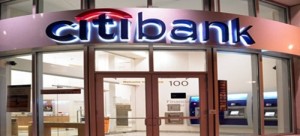
Citibank is the consumer division of financial services multinational Citigroup. Citibank was founded in 1812 as the City Bank of New York, later First National City Bank of New York. The United States is the largest single market with approximately 26% of branches, generating 51% of revenues. Citibank’s 983 North American branches are concentrated in major metropolitan areas including New York City, Chicago, Los Angeles, San Francisco, Washington, D.C., and Miami. Latin America markets make up 25% of revenues, Asia 20%, and Europe / Middle East / Africa 4%.
In addition to standard banking transactions, Citibank markets insurance, credit cards, and investment products. Their online services division is among the most successful in the field, claiming about 15 million users.
As a result of the global financial crisis of 2008–2009 and huge losses in the value of its subprime mortgage assets, Citibank was bailed out by aid from the U.S. government. On November 23, 2008, in addition to initial aid of $25 billion, a further $25 billion was invested in the corporation together with guarantees for risky assets amounting to $306 billion.Since this time, Citibank has repaid its government loans in full, resulting in a net profit for the U.S. government.
2. Bank of America
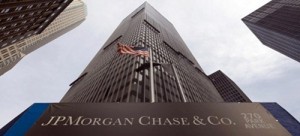
Bank of America (abbreviated as BoA or BofA) is an American multinational banking and financial services corporation headquartered in Charlotte, North Carolina. It is the second largest bank holding company in the United States by assets. As of 2013, Bank of America is the twenty-first largest company in the United States by total revenue. In 2010, Forbes listed Bank of America as the third biggest company in the world.
Bank of America provides its products and services through operating 5,100 banking centers, 16,300 ATMs, call centers, and online and mobile banking platforms. Its Consumer Real Estate Services segment offers consumer real estate products comprising fixed and adjustable-rate first-lien mortgage loans for home purchase and refinancing needs, home equity lines of credit, and home equity loans.
3. JP Morgan Chase
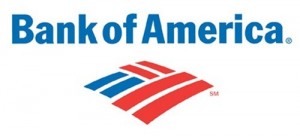
JPMorgan Chase & Co. is an American multinational banking and financial services holding company headquartered in New York City. It is the largest bank in the United States, and the world’s sixth largest bank by total assets, with total assets of US$2.35 trillion. Moreover, it is the sixth largest public company in the world according to the Forbes Global 2000. It is a major provider of financial services, and according to Forbes magazine is the world’s sixth largest public company based on a composite ranking. The hedge fund unit of JPMorgan Chase is the second largest hedge fund in the United States. The company was formed in 2000, when Chase Manhattan Corporation merged with J.P. Morgan & Co.
4. Credit Agricole Group
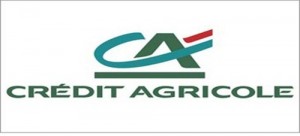
Crédit Agricole, sometimes called the “Green Bank”because of its historical ties to farming, is a French network of cooperative and mutual banks comprising the 39 Crédit Agricole Regional Banks. In 1990, it became an international full-service banking group. It is listed through its holding company, Crédit Agricole S.A., on Euronext Paris’ first market and is part of the CAC 40 stock market index. In 2013, the Crédit Agricole Group reported revenues of €26.4 billion.
It was the title sponsor of the Crédit Agricole professional road cycling team from 1998 to 2008.
5. HSBC
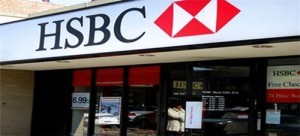
HSBC Holdings plc is a British multinational banking and financial services company headquartered in London, United Kingdom. It is the world’s fifth largest bank by total assets, with total assets of US$2.67 trillion. It was established in its present form in London in 1991 by the Hongkong and Shanghai Banking Corporation Limited to act as a new group holding company. The origins of the bank lie mainly in Hong Kong and to a lesser extent in Shanghai, where branches were first opened in 1865. The HSBC name is derived from the initials of the Hongkong and Shanghai Banking Corporation. The company was first formally incorporated in 1866. The company continues to see both the United Kingdom and Hong Kong as its “home markets”.
HSBC has around 6,600 offices in 80 countries and territories across Africa, Asia, Oceania, Europe, North America and South America, and around 60 million customers. As of 2014, it was the world’s sixth-largest public company, according to a composite measure by Forbes magazine.
6. BNP Paribas
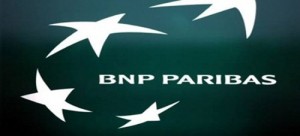
BNP Paribas (French pronunciation: [be ɛn pe paʁibɑ]) is a French multinational bank and financial services company with global headquarters in Paris.BNP Paribas is one of the largest banks in the world. Based on 2012 information, BNP Paribas was ranked as the third-largest bank in the world, as measured by total assets, by Bloomberg and Forbes.In 2010, It was the world’s 18th largest corporation, according to the Fortune Global 500 list, the rankings are based on revenues, accounted for as the sum of gross interest income and gross non. It was formed through the merger of Banque Nationale de Paris (BNP) and Paribas (see below for name origin) in 2000. The company is a component of the Euro Stoxx 50 stock market index.
The firm is a universal bank split into two strategic business units: Retail Banking & Services (which includes Asset Management, custodial banking, and real estate services), and Corporate and Institutional Banking. BNP Paribas’s four domestic markets are France, Italy, Belgium, and Luxembourg. It also has significant retail operations in the United States, Poland, Turkey, Ukraine, and North Africa, as well as large-scale investment banking operations in New York, London, Hong Kong, and Singapore.
7. HBOS
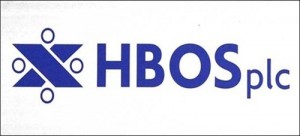
HBOS plc is a banking and insurance company in the United Kingdom, a wholly owned subsidiary of the Lloyds Banking Group, having been taken over in January 2009. It is the holding company for Bank of Scotland plc, which operates the Bank of Scotland and Halifax brands in the UK, as well as HBOS Australia and HBOS Insurance & Investment Group Limited, the group’s insurance division.
HBOS was formed by the 2001 merger of Halifax plc and the Bank of Scotland.The formation of HBOS was heralded as creating a fifth force in British banking as it created a company of comparable size and stature to the established Big Four UK retail banks. It was also the UK’s largest mortgage lender. The HBOS Group Reorganisation Act 2006 saw the transfer of Halifax plc to the Bank of Scotland, which was now a registered public limited company, Bank of Scotland plc.
8. Mitsubishi Tokyo Financial Group
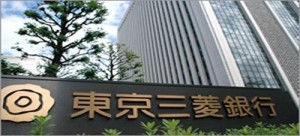
Mitsubishi UFJ Financial Group, Inc. (MUFG; 株式会社三菱UFJフィナンシャル・グループ Mitsubishi Yūefujei Finansharu Gurūpu) is a Japanese bank holding / financial services company headquartered in Chiyoda, Tokyo, Japan.
It holds assets of around US$2.5 trillion (JPY 230 trillion) as of March 2013 and is one of the main companies of the Mitsubishi Group. It is Japan’s largest financial group and the world’s second largest bank holding company holding around US$1.8 trillion (JPY 148 trillion) in deposits as of March 2011. Mitsubishi UFJ Financial is the second largest public company in Japan when measured by market capitalization.
9. Mizuho Financial Group
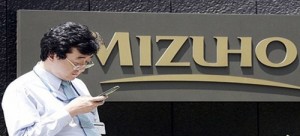
Mizuho Financial Group, Inc. (株式会社みずほフィナンシャルグループ Kabushiki-gaisha Mizuho Finansharu Gurūpu?), abbreviated as MHFG, or simply called Mizuho, is a banking holding company headquartered in the Ōtemachi district of Chiyoda, Tokyo, Japan. The name “mizuho (瑞穂?)” literally means “abundant rice” in Japanese and “harvest” in the figurative sense.
It holds assets in excess of $2 trillion US dollars through its control of Mizuho Bank, Mizuho Corporate Bank, and other operating subsidiaries. The company’s combined holdings form the second largest financial services group in Japan. Its banking businesses rank the third in Japan after MUFG and SMFG, and the ninth in the world by market capitalisation as of November 2009. It is the 59th largest company in the world according to Forbes Global 2000 rankings. Its shares have a primary listing on the Tokyo Stock Exchange.
10. Royal Bank of Scotland
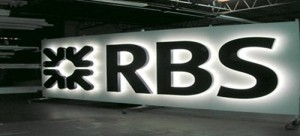
The Royal Bank of Scotland plc (Scottish Gaelic: Banca Rìoghail na h-Alba, Scots: Ryal Baunk o Scotland, Welsh: Banc Brenhinol yr Alban), commonly abbreviated as RBS, is one of the retail banking subsidiaries of The Royal Bank of Scotland Group plc, and together with NatWest and Ulster Bank, provides banking facilities throughout the UK and Ireland. The Royal Bank of Scotland has around 700 branches, mainly in Scotland though there are branches in many larger towns and cities throughout England and Wales. The Royal Bank of Scotland and its parent, The Royal Bank of Scotland Group, are completely separate from the fellow Edinburgh based bank, the Bank of Scotland, which pre-dates The Royal Bank of Scotland by 32 years. The Bank of Scotland was effective in raising funds for the Jacobite Rebellion and as a result, The Royal Bank of Scotland was established to provide a bank with strong Hanoverian and Whig ties.
